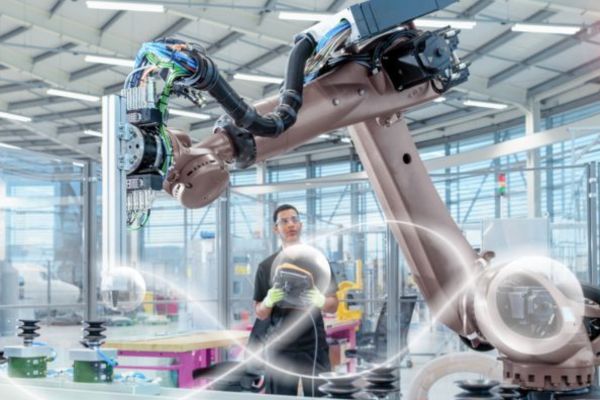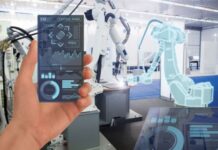Machine control systems have become indispensable in modern manufacturing environments, acting as the backbone for achieving high precision, repeatability, and productivity. These systems—comprised of integrated hardware and software platforms—allow for the automated regulation, guidance, and operation of machines on the production floor. From CNC machines and robotic arms to complex assembly lines and quality inspection systems, machine control systems enable manufacturers to transition from manual operations to highly optimized, data-driven production workflows.
As the manufacturing industry shifts toward smart factories and Industry 4.0 paradigms, machine control systems are increasingly being integrated with real-time monitoring tools, IoT sensors, and AI-driven analytics, all of which contribute to a significant leap in operational efficiency. According to the Consegic Business Intelligence report, Machine Control System Market size is estimated to reach over USD 10,858.22 Million by 2032 from a value of USD 6,379.21 Million in 2024 and is projected to grow by USD 6,725.60 Million in 2025, growing at a CAGR of 7.5% from 2025 to 2032.
Precision and Repeatability through Closed-Loop Automation:
One of the primary advantages of machine control systems is their ability to enable closed-loop automation, where sensors constantly feed real-time data back to the control unit, which adjusts parameters on-the-fly to ensure optimal performance. This loop minimizes deviations in machining processes such as drilling, milling, or additive manufacturing, resulting in improved dimensional accuracy and surface finish quality.
In high-precision sectors such as aerospace and medical device manufacturing, even the slightest deviation can lead to costly errors or non-compliance. Machine control systems eliminate these variances by ensuring every cycle, operation, or tool path is executed within micrometre tolerances, thus supporting consistent product quality over long production runs.
Moreover, repeatability in production operations directly contributes to lower rejection rates, less scrap material, and reduced rework—all of which drive down operational costs and increase yield.
Real-Time Monitoring and Adaptive Process Control:
Modern machine control systems are built with real-time data acquisition capabilities, enabling continuous monitoring of machine health, process variables, and part quality. These systems are often integrated with edge computing platforms that process data locally, allowing for sub-millisecond response times in high-speed manufacturing environments.
For instance, in metal cutting operations, sensors embedded in the machine tool can detect vibrations, tool wear, and temperature fluctuations. Based on this input, the control system can autonomously adjust feed rates, spindle speeds, or coolant flow, thus preventing tool failure and ensuring consistent material removal rates.
This adaptive control extends to a variety of applications including injection molding, packaging, and semiconductor manufacturing, where minor deviations can lead to substantial losses in uptime and quality. Real-time feedback also enables predictive maintenance strategies, where impending failures are identified and addressed before they result in unscheduled downtime.
Integration with Digital Manufacturing Ecosystems:
Another key advantage of machine control systems lies in their interoperability with digital manufacturing ecosystems. When connected with Manufacturing Execution Systems (MES), Enterprise Resource Planning (ERP) software, and Industrial Internet of Things (IIoT) platforms, these systems become part of a broader, synchronized production network.
Data generated by machine control systems—such as cycle time, energy consumption, and part conformance—is used to feed advanced analytics engines that identify bottlenecks, calculate OEE (Overall Equipment Effectiveness), and inform continuous improvement initiatives.
Furthermore, cloud-based machine control interfaces enable remote access and diagnostics, facilitating remote operations, centralized control, and global scalability. This is especially critical for multinational manufacturers operating smart factories across geographies, allowing engineers to monitor and fine-tune machines regardless of location.
Human-Machine Collaboration and Safety Enhancements:
Machine control systems are also pivotal in enhancing operator safety and ergonomics. Human-Machine Interfaces (HMIs) integrated with machine controllers offer intuitive dashboards, touchscreens, and voice commands that reduce cognitive load on operators and enable faster troubleshooting.
In collaborative robot (cobot) environments, machine control systems use proximity sensors, force-torque monitoring, and AI-based vision systems to dynamically adjust the robot’s behavior based on human presence. This ensures that machines operate safely in shared workspaces, facilitating human-machine collaboration without compromising throughput.
In industries like automotive and electronics assembly, this integration boosts productivity by allowing workers to focus on skilled tasks while machines handle repetitive or hazardous operations under close supervision and dynamic control.
Conclusion:
Machine control systems are redefining what is possible in modern manufacturing by enabling smarter, safer, and more efficient operations. Through real-time monitoring, precision automation, and seamless integration with enterprise systems, they are at the forefront of the manufacturing sector’s transformation into a digital-first, data-centric industry.
For manufacturers aiming to remain competitive in a rapidly evolving market, investment in advanced machine control infrastructure is no longer optional—it is strategic. As technologies such as AI, machine learning, and industrial connectivity continue to evolve, machine control systems will play a central role in driving the next generation of manufacturing excellence.
Source: Machine Control System Market
















